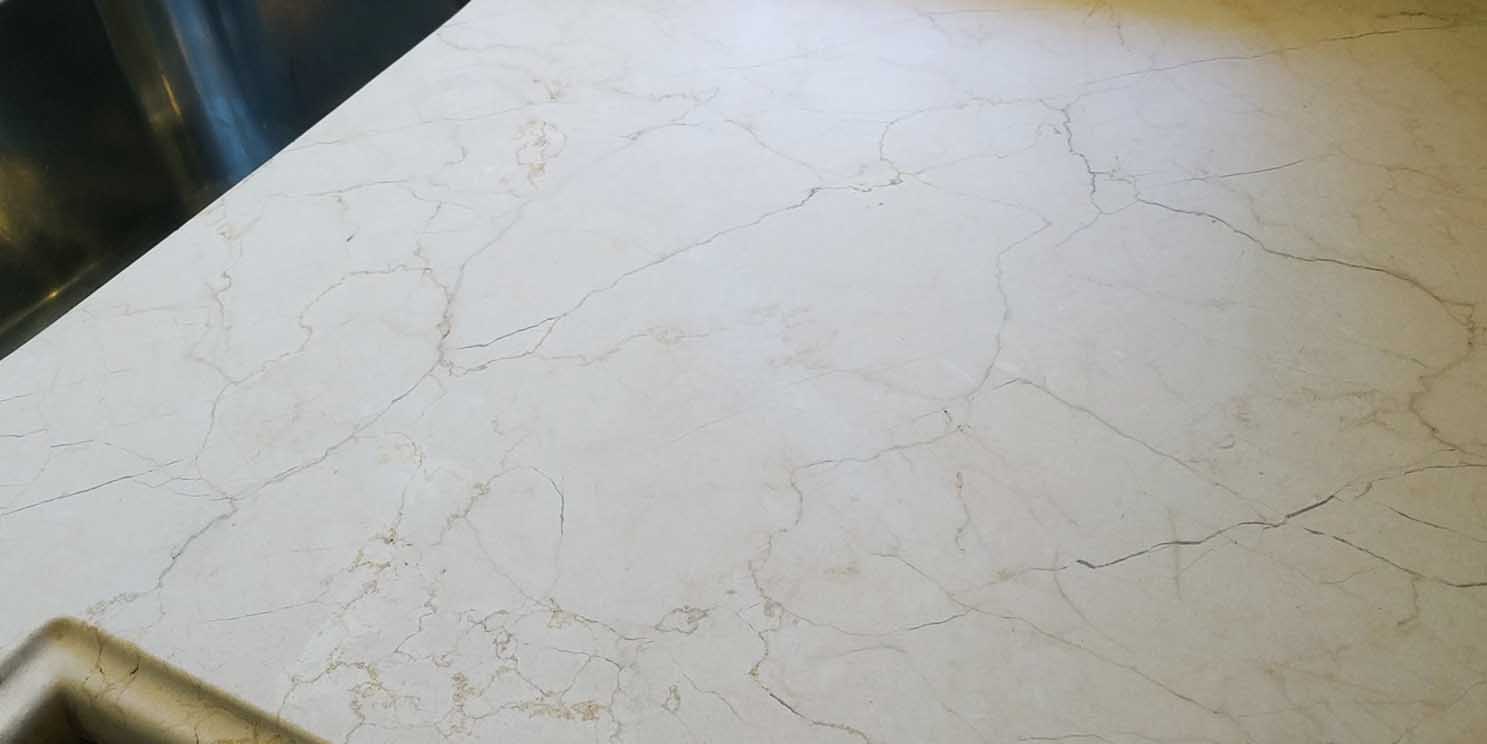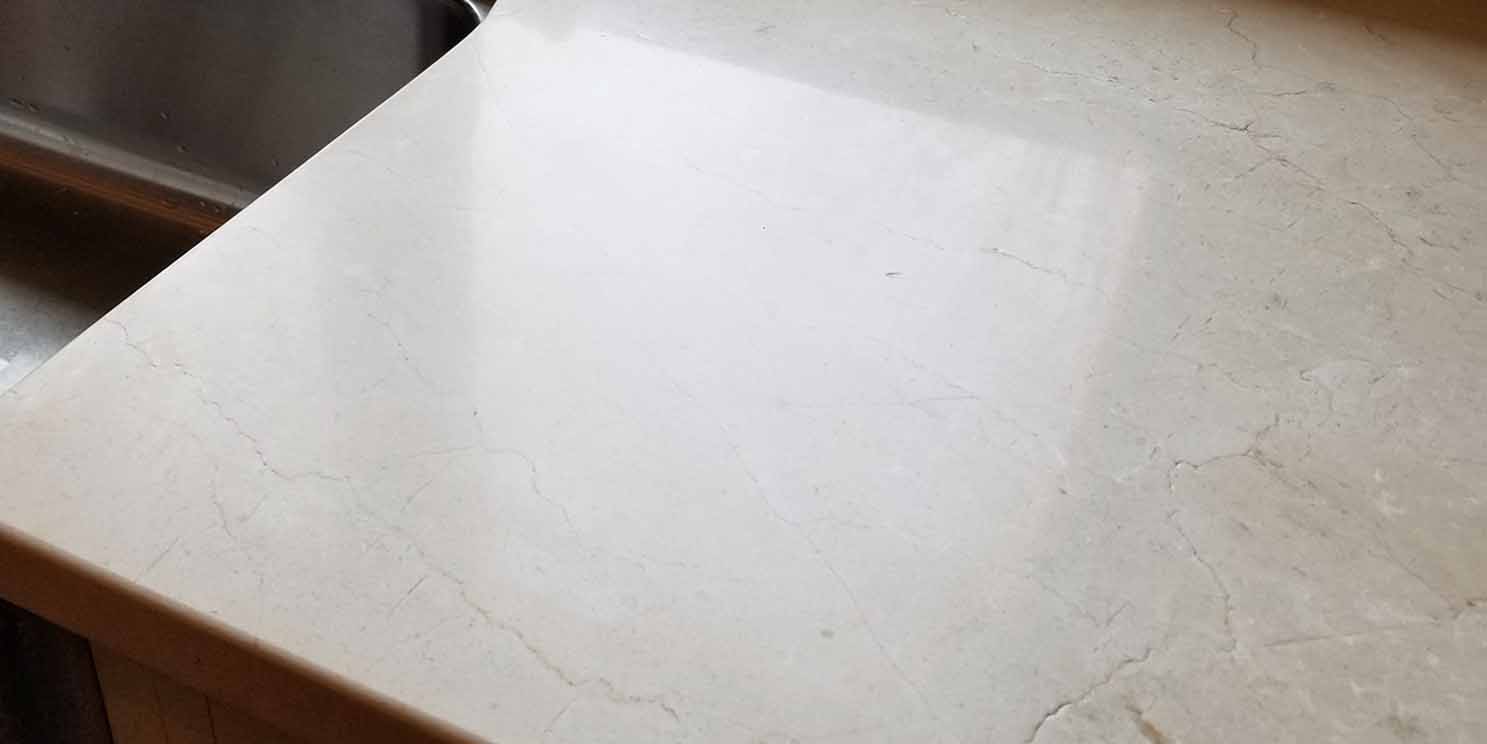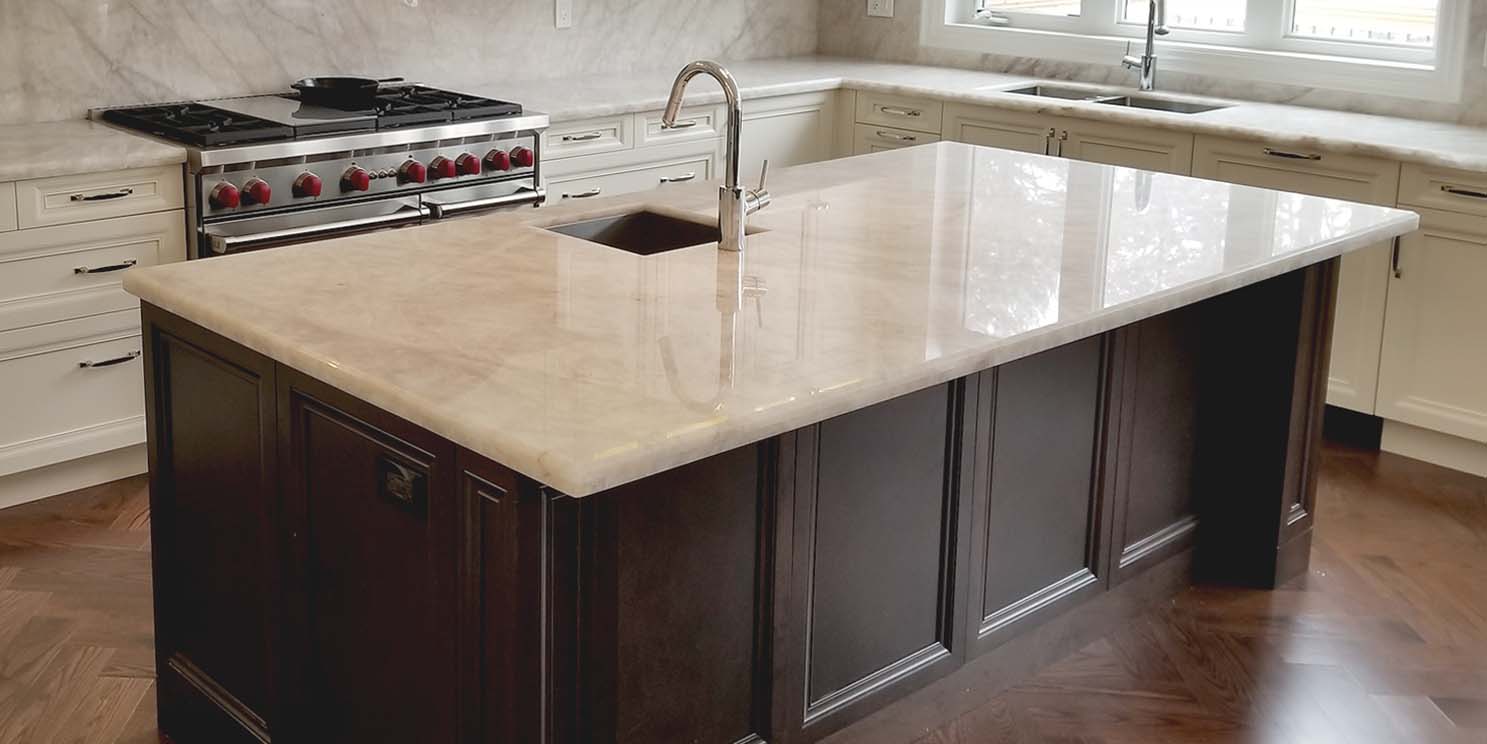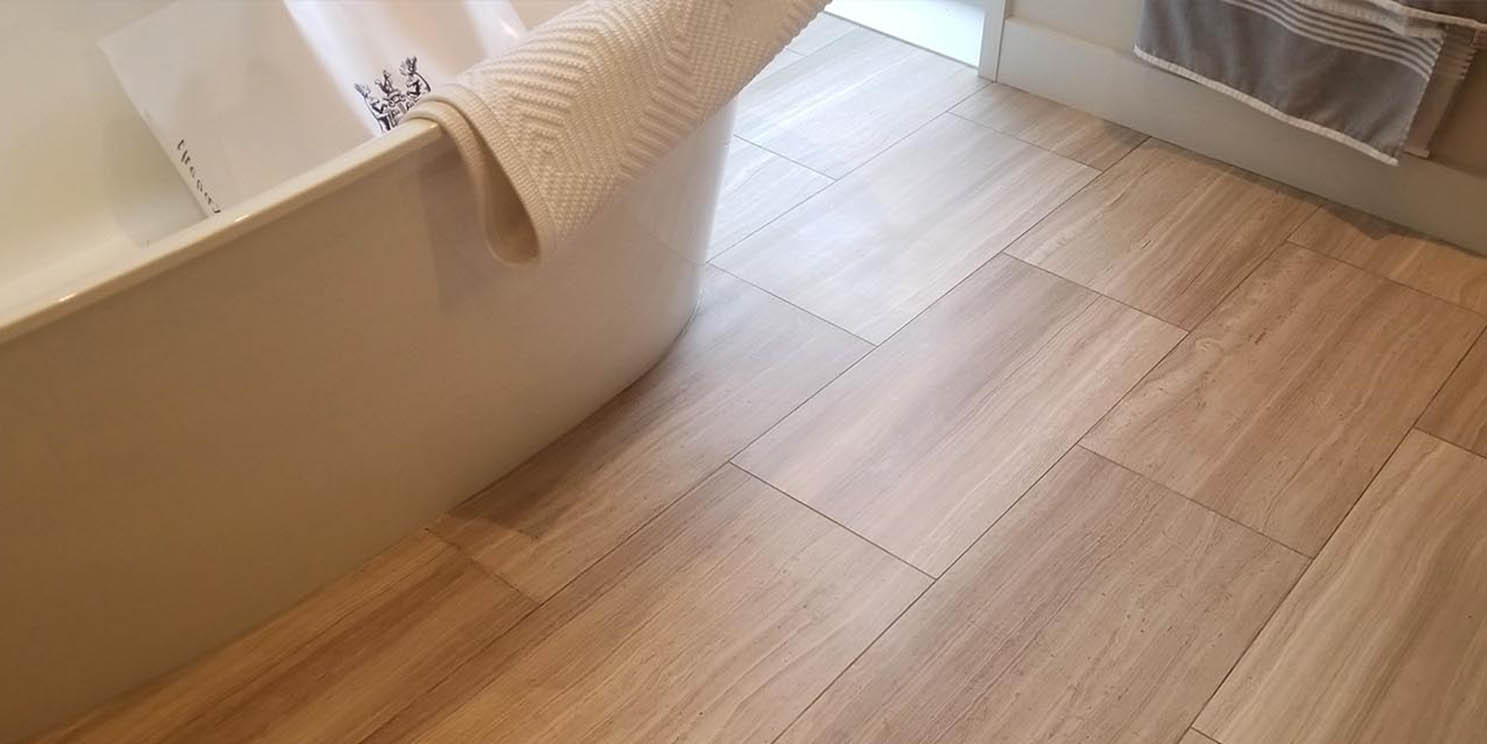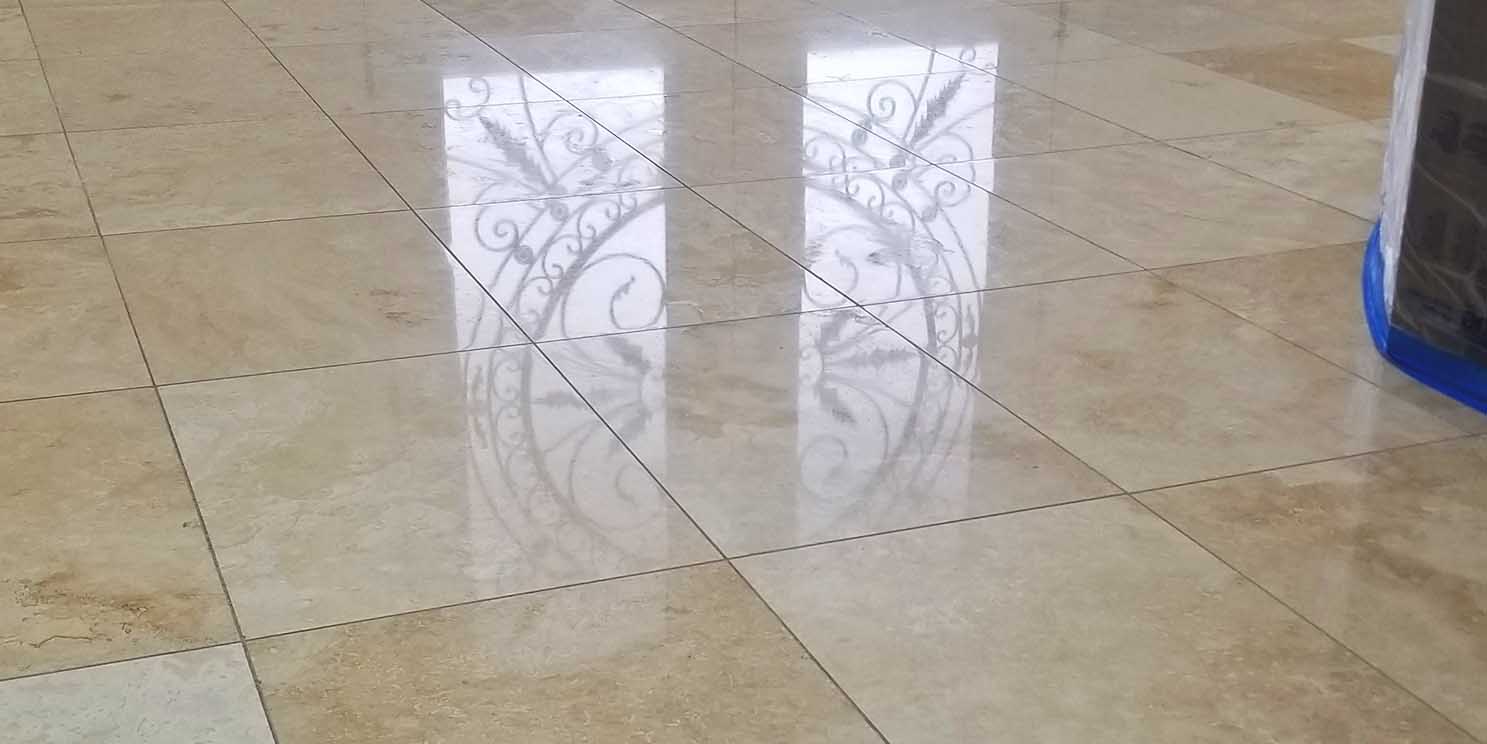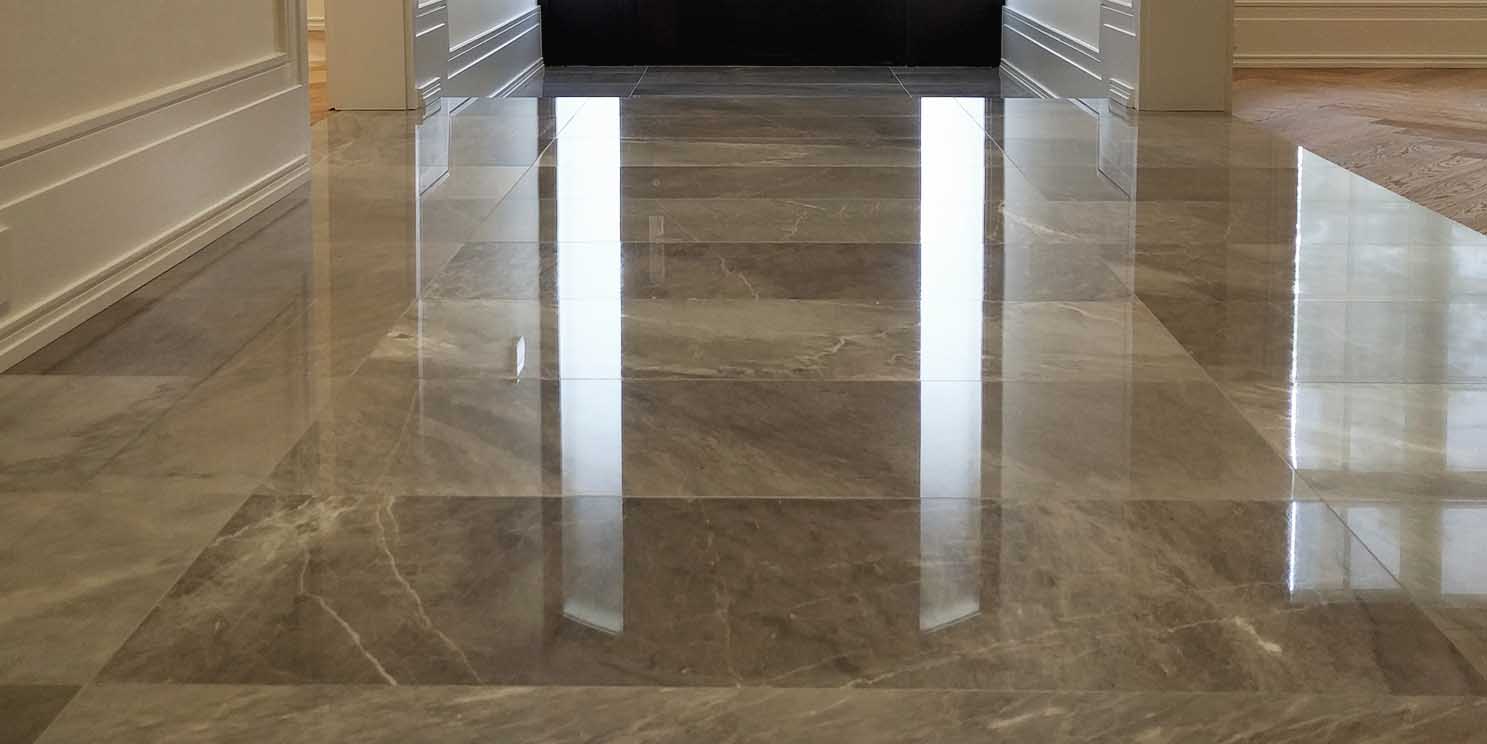It goes without saying that when it comes to etches, a polished finish is not very durable. Using a strong acid based cleaner even once can easily burn the finish of the stone, leaving streaks and splashes of dullness across the polished surface. The most common example of this occurring is when an acid based soap scum or hard water remover is used in a shower, or toilet bowl cleaner is spilled around a toilet. That said, if you or your cleaning staff are careful not to use the wrong products, there is no reason a polished floor shouldn’t hold up for a very long time. With regards to sealing, the polishing process does close off many of the pores in the stone, which has the benefit of slowing stains from absorbing into the material, usually requiring sealer less frequently. Lobbies and commercial spaces are often left polished with annual or biannual servicing with great success. The broader idea (and this is somewhat difficult to describe) is when you are looking at a polished floor, the stone takes a back seat to the reflection. Taking this idea further, when there are scratches, general traffic wear or even light etching, as long as there is any shine, that damage tends to fade into the background aesthetic of the broader space. Once the wear patterns become truly dull, visibility of damage accelerates aggressively. With regards to scratches, the smoothness of a polished floor actually helps grit roll across the surface rather than catch on the grain of the stone, this explains why once the surface becomes dull, it becomes very damaged very quickly. This is a very common phenomenon in commercial spaces like malls, the floors go for a year or two holding a decent shine, but once they become even remotely dull, scratches and absorption of dirt accelerates very quickly. We will cover the patina finish in the next (honed durability) section, which is a very good solution for high traffic floors.
